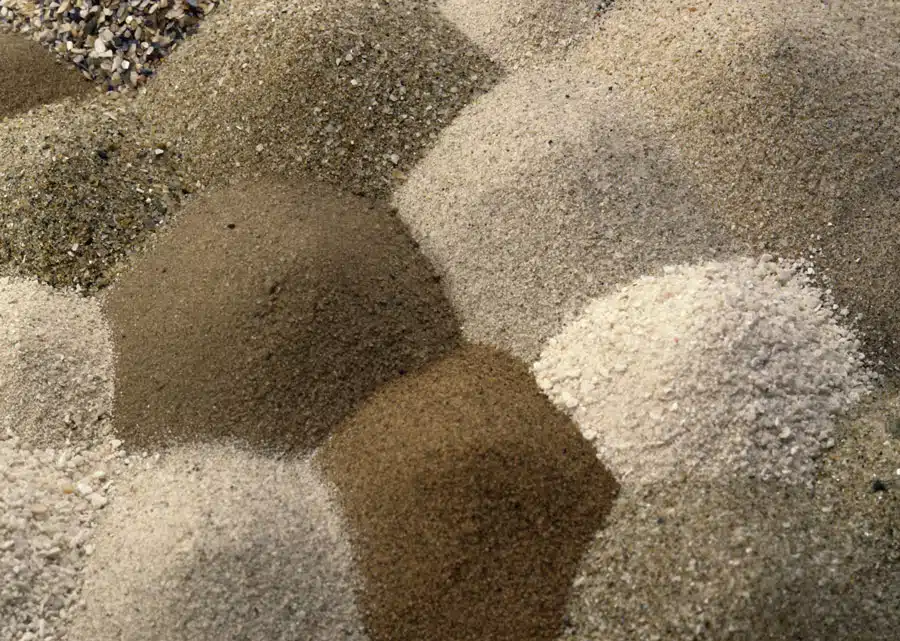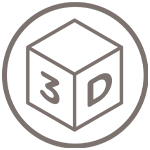What is a particle size analysis?
The term particle size describes the size of individual particles (also known as grains) in a mixture. The grain or particle size distribution has a significant influence on the material properties in many technical and scientific fields such as construction, sedimentology, soil science and metallurgy. A variety of grain or particle mixtures are used there. These grain mixtures include all types of bulk material such as sand and gravel, flour, cocoa, plastic granules and pigments. In metallurgy, the microstructures within metallic materials are also referred to as grains.
If one were to assume that grains or particles were present as perfect spheres, one could simply use the sphere diameter as a measure of the grain size. However, this assumption is inadequate in practice, as naturally formed or technically produced particles come in a wide variety of shapes. The equivalent diameter is therefore used to describe their size. This means that another measurable property is determined and the measured values are related to (equivalent) spheres of the same size.
A simple example of an equivalent diameter is the sieve diameter. Both a ball with a diameter of 1 mm and an elongated grain in the shape of a pencil with a diameter of 1 mm will fit through the square hole of a sieve with an edge length of 1 mm, for example. Via the diagonal of the sieve hole, this also applies to a flat grain in the shape of a coin with a diameter significantly larger than 1 mm. All three grains have the same equivalent diameter of 1 mm.
Other examples of equivalent diameters are hydrodynamic diameter (same falling speed in a water column as a sphere) or aerodynamic diameter (same falling speed in air as a sphere).
To determine the composition of a batch in terms of particle size, a variety of methods can be selected, which ultimately always determine an equivalent diameter. The appropriate method depends on the particle size range, the problem or regulations (e.g. DIN standards).
Very large particles (approximately from a size of 63 mm) are measured individually by hand or the size is determined from photos. For particles in the 10 µm to button size range, the size can be determined by sieving. Here, a set of sieves is placed on top of each other with increasing fineness towards the bottom. The sample to be analyzed is filled into the top sieve and the sieve set is then clamped into a sieving machine. The machine then shakes or vibrates the sieve set for a certain period of time. If there is a high proportion of fines, the sieving is carried out with running water (wet sieving). The grain sizes determined in this way are usually given in millimeters. In English-speaking countries, the unit of measurement mesh is often used.
For very fine particles (< 10 µm), methods are used in which the particles are allowed to settle in a water column (coarse particles fall faster than fine ones) and the density of the suspension is regularly determined (using a hydrometer) or the mass of the settled particles is determined (sediment balance). Modern methods work with the scattering of laser light on the particles, which varies depending on the particle size, or with digital image processing. In soil science, sludge analysis is used from a particle size of 0.063 mm = 63 µm (and smaller); in building materials science, the determination is carried out in a washout test. In production processes where defined grain sizes are important for the raw materials or the product, grain size analysis is an essential part of quality control. [/av_textblock] [av_hr class=”default” height=”50″ shadow=”no-shadow” position=”center” custom_border=”av-border-thin” custom_width=”50px” custom_border_color=”” custom_margin_top=”30px” custom_margin_bottom=”30px” icon_select=”yes” custom_icon_color=”” icon=”ue808″ av-desktop-hide=”” av-medium-hide=”” av-small-hide=”” av-mini-hide=”” av_uid=”av-31n7ru”] [av_textblock textblock_styling_align=”” textblock_styling=”” textblock_styling_gap=”” textblock_styling_mobile=”” size=”14″ av-medium-font-size=”” av-small-font-size=”” av-mini-font-size=”” font_color=”custom” color=”#9b9b9b” id=”” custom_class=”” template_class=”” av_uid=”av-laclwgn4″ sc_version=”1.0″ admin_preview_bg=””] Online source:
https://de.wikipedia.org/wiki/Korngr%C3%B6%C3%9Fe, retrieved: March 17, 2020, 17:55 UTC


















